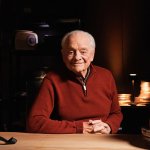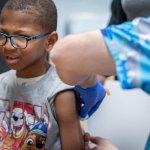Laurynn Evans is a visionary educational leader with over twenty years of experience across public, private, and international schools.
As the Chief of Marketing and Outreach with UnconstrainED., Laurynn has been instrumental in integrating global perspectives and technological innovations into curriculums to foster multicultural understanding and prepare students for a connected world.
Her leadership is characterized by a strategic and empathetic approach, under which she has successfully implemented progressive academic programs and sustainability initiatives.
Beyond the classroom, Laurynn champions environmental conservation, a passion she explores through her venture, Seainggreen Productions, which focuses on underwater videography.
Dedicated to lifelong learning and community engagement, Laurynn’s work exemplifies her commitment to developing educational environments that cultivate informed, empathetic, and globally-aware citizens. Laurynn Evans efforts reflect a deep belief in the transformative power of education to improve societal outcomes and build a better future.
Laurynn, can you share how your background has influenced your approach to educational leadership?
Absolutely. As a child I lived in several countries and experienced different cultures across Europe and Asia. Growing up with a global perspective and experiencing diverse cultures firsthand really shaped my approach to education. These experiences instilled in me the importance of inclusivity and understanding in educational settings. I strive to bring that global perspective into every initiative I undertake, ensuring our educational programs are not only inclusive but also expansive, reaching beyond local boundaries to global insights.
What innovations in education are you most excited about right now?
I’m particularly excited about the integration of artificial intelligence and machine learning in educational settings. These technologies hold the potential to revolutionize personalized learning, providing students with tailored educational experiences that adapt to their unique learning styles and paces. More important, AI has the potential to help teachers connect more authentically with students by reducing the burdensome administrative tasks that seem to be overwhelming teachers around the world. Additionally, I’m passionate about programs that foster environmental sustainability and global citizenship—preparing students not just academically but as conscientious global citizens is crucial.
How do you balance technology integration with traditional teaching methods?
Balancing technology with traditional methods involves a thoughtful blend of both worlds. While technology offers incredible tools for engagement and personalization, traditional methods provide the foundational human touch needed for effective teaching. My approach is to use technology as an enhancer rather than a replacement. For instance, while we might use a digital platform for coursework, we ensure that discussions, debates, and interpersonal activities remain integral parts of the classroom experience.
Can you describe a challenging moment in your career and how you handled it?
One particularly challenging moment was navigating the transition to online learning during the early days of the COVID-19 pandemic. We had to ensure that our students continued to receive quality education while also managing the uncertainties and stresses that came with the pandemic. My approach was to lead with empathy, ensuring open lines of communication with teachers, students, and parents. We provided resources and support to teachers while also ensuring that our students had the tools they needed to succeed in a drastically new learning environment.
What strategies do you use to ensure that environmental sustainability is integrated into the school curriculum?
To integrate environmental sustainability, we start by embedding it into the curriculum across various subjects, not just science. For example, in social studies, students might learn about the socio-economic impacts of environmental changes, while in art, they might use recycled materials for projects. We also engage in school-wide sustainability initiatives like recycling programs and energy-saving campaigns to practice what we preach, making sustainability a lived experience for our students.
How do you see the role of global education evolving in the next decade?
Over the next decade, I anticipate global education will become even more integral to our curricula. As the world becomes increasingly interconnected, understanding global issues and cultures will be indispensable. I see a future where global education is not a separate part of the curriculum but is interwoven with every subject, helping students develop a nuanced understanding of their world and their role in it.
What advice would you give to young educators entering the field today?
My advice to young educators is to remain adaptable and lifelong learners. The field of education is always evolving, influenced by societal changes, technological advancements, and new pedagogical research. Staying informed and adaptable will allow you to continually refine your teaching methods and better serve your students. Also, don’t forget the power of empathy—understanding and connecting with your students on a human level is one of the most powerful tools you have as an educator.
How do you foster a culture of innovation among your staff and students?
Fostering a culture of innovation starts with creating an environment where everyone feels safe to express their ideas and take risks. When I was in the school house, I encouraged staff and students to think outside the box by promoting a mindset where ‘failure’ is seen as a stepping stone to success. We held regular brainstorming sessions, offered professional development workshops focused on innovative teaching methods, and provided platforms where both students and teachers can showcase their innovative projects. It’s about empowering everyone to be a changemaker in their own right.
What role do partnerships play in advancing your educational initiatives?
Partnerships are vital in amplifying the impact of our educational initiatives. Collaborating with local businesses, universities, non-profits, and international organizations brings in diverse perspectives and resources that enhance our programs. For example, partnerships with tech companies (like UnconstrainED) have provided school systems with access to cutting-edge technologies, while collaborations with local environmental groups have enriched our sustainability programs. These partnerships not only provide practical benefits but also expose our students to real-world applications of their learning, preparing them for life beyond school.
Finally, what does leadership mean to you in the context of education?
To me, leadership in education means inspiring and facilitating growth—growth of students, teachers, and the educational community as a whole. It involves setting a vision, motivating others to strive towards that vision, and providing the support and resources needed to achieve it. It’s about making tough decisions with a compassionate heart and an open mind. Ultimately, educational leadership is about paving the way for future generations to build a better world.









